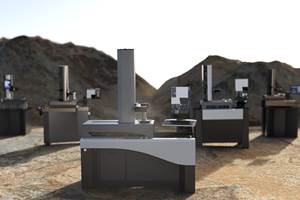To Scan or Not to Scan
Industrial metrology professionals are constantly tasked with finding the best methodology to inspect parts.
The decision to scan is dependent on the application.
Industrial metrology professionals are constantly tasked with finding the best methodology to inspect parts. When researching coordinate measuring machines (CMMs), or evaluating the capabilities of existing equipment, the discussion naturally turns toward accessories that will complement the CMM.
Several solutions exist, each with its associated benefits and drawbacks. The trick is finding the correct option that is neither overkill nor inadequate.
When measuring small- to medium-sized parts, there are four main categories of inspection accessories available. The first are touch-trigger probes, which take discrete points on a part. The second is analog scanning probes, which run along the surface of a part, taking thousands of individual points at a time.
Laser stripe scanners use a laser stripe to take thousands, or even millions, of points on a surface. Finally, chromatic white light sensors (CWS) offer high accuracy, non-contact inspection.
When faced with the decision of whether to scan a part, metrology professionals inherently lean toward analog scanning as it captures a large amount of high-accuracy 3D coordinate data with easy access to most areas. It is also especially useful because it is more likely that all critical features are captured.
Using analog scanning improves repeatability of the results while decreasing measurement uncertainty. In reality, however, the decision to scan a part is more nuanced and dependent on the application.
What can go Wrong?
The first step in evaluating inspection techniques is to look at the overall manufacturing process and think about what can potentially go wrong. For example, if the part is a plastic component, is there a thicker area prone to shrinkage as the material cools and settles? If the answer is yes, and it is a critical feature with high tolerances, it should be scanned. If the feature is not critical and has low tolerances, touch probing is likely sufficient.
Also, when evaluating the process, the component’s use should be taken into consideration. A plastic connector for automotive parts, such as the one shown in Figure 1 requires a tight seal to eliminate the possibility of water ingress. Though the connector has simplistic features that could easily be touch probed, the edge where it forms a seal will likely have tighter tolerances that require analog scanning.
A skilled metrology professional will review the manufacturing process from start to finish to determine the best approach. Figure 2 shows a nail gun that has some interesting features on the original die-cast component.
Additionally, there are machining processes that factor into the decision whether or not to scan. On this particular component, the company may check its profile by laser scanning the die-cast aluminum housing.
When checking other features, especially those located beneath the surface of the part, analog scanning or even touch probing would be adequate. Another feature to check would be mating surfaces of the component. Since there could be an issue of fit, analog scanning might be a better choice on such surfaces.
What are the Tolerances?
As alluded to previously, the tolerance required on a given datum will play into determining the ideal inspection method. Although laser scanning has come a long way since its inception, it is still relatively poor in terms of accuracy when compared with other methods.
Laser scanning should not be used when tolerances are tighter than ± 0.01 inch, but is ideal for looser tolerances on parts with numerous surfaces controlled by profile. Touch probing delivers higher accuracy, but it has a lower repeatability when compared with analog scanning probes.
Analog scanning is considered the most accurate method of inspecting a part and can hold tolerances of as high as ± 0.0005 inch. Chromatic white light sensors (CWS) are high accuracy, non-contact method of inspection that has the capability of measuring down to 10 nanometers. CWS are used for features too small to measure with a touch probe, or for components that require non-contact measurement such as flexible parts.
In the case of certain medical components, such as the femoral shown in Figure 3, scanning is the ideal option. This is because the profile needs to be inspected to a high level of accuracy. In some instances, non-contact scanning through a CWS is preferable if the part cannot be touched. A CWS is also especially useful for highly reflective, transparent and matte black surfaces.
On the other end of the spectrum, certain parts lend themselves to discrete point probing. A stamped component with loose tolerances, where form is not an issue and the profile of hole locations is required, is best suited for point probing. Even though the part may contain multiple features, scanning is overkill and a waste of money.
Some parts could have several callouts with a large variety of tolerances. In this instance a multi-sensor CMM would be the ideal choice since parts can be measured with different sensors within the same program. On the die-cast top plate of an automatic transmission seen in Figure 4, there are machined features with relatively loose hole tolerances, but internally, there are high accuracy features.
Because of the variety of features on the part, the initial casting might be laser scanned when it is received from the supplier. After machining, analog scanning the face is recommended because there is likely to be tight tolerance form callouts, so it can form a seal with the transmission. The bore holes might also be scanned or, depending on their tolerances, touch probed to save time.
Paintbrush or Pen?
When evaluating the proper inspection method for components, the desired throughput should be taken into account. There are three main categories. Single point, usually done with touch probes, takes one measurement at a time, but is fairly slow at approximately a point a second.
Analog probing gathers a single line of data similar to a pen creating a single line. Sensors that fall into this category are analog scanning probes and the CWS. For high data collection, the laser stripe sensor offers high point density as it is more comparable to a paintbrush.
Collecting data quickly and accurately is a great capability, but there are no benefits unless it is presented in an understandable way to the intended audience. Today, the trend is to employ laser scanning because it is fast, fairly accurate and all required datums are captured at once. However, this capability may not be necessary for collecting the data needed to inspect critical features.
Once data is gathered, the question of data management surfaces, or what should be done with the information. Is the goal to simply compare the physical part with its CAD model and, if so, what are the main areas of concern?
Millions of data points can be collected with a laser sensor. If the plan for that data is to see how the part looks, the company has lost sight of its true purpose of verifying the critical features of the part. In many cases, an excessive amount of point data can be a detriment instead of a benefit—bogging down software and computing processes or focusing unnecessary attention on non-critical areas.
What Does it Cost?
The final concern when examining different probing options is the available budget. There is a reason this factor is the last consideration, rather than the starting point. An organization should first research the best technology for its application. It should then look at the benefits, as well as the associated cost savings, and calculate the predicted return on investment. Only then should budget considerations be addressed.
Should You Scan It?
Companies are always in pursuit of the next big thing to help cut costs, boost production or increase sales. This leads some to follow industry trends and jump on the bandwagon every time a new technology is introduced.
However, just because the competition is doing it does not necessarily mean it is right for every company. There is a difference between doing things and doing them well. Narrowing down the best option takes work, but with proper foresight and investigation, the ideal solution soon emerges.
Ready for Prime Time
Industry’s move toward scanning solutions is partially because of improved throughput, but also due to the way in which part prints are created. In the past, parts were referenced with width and length dimensions.
Today, product lifecycles continue to shrink. To iterate an existing part, using width and length, is too complex and takes too long to change. When the entire shape of the part is controlled by profile, the time required to change the CAD model drops drastically. A part that is controlled by profile also lends itself to embedded GD&T profile controls. Scanning is especially useful when the location of features is contained within the part’s profile.
Related Content
Streamlining Part Measurement, Data Collection Processes
When collecting measurement data automatically with a wireless data collection system, manual errors can be eliminated ensuring data accuracy and traceability.
Read MorePMTS 2023 Product Preview: Measurement
Learn about some of the latest measurement solutions that will be on display at PMTS 2023.
Read MoreIn-Machine Probing Possibilities for VTLs
A manufacturer of vertical turning centers uses a “push/pull” optoelectronic probe with custom bracket to enable its machines to perform effective, in-process measurement of shafts and related automotive components.
Read MoreAddressing Machining’s Necessary Evil
Many view quality control as such, but integrating new measurement technologies and approaches can ultimately minimize QC’s impact on throughput and a company’s bottom line.
Read MoreRead Next
Seeing Automated Workpiece Measurement in Real Time
User-friendly inspection software for CNC machining centers was shown at IMTS 2024 monitoring measurements between and after machining while performing SPC based on recorded measurement values.
Read MoreDo You Have Single Points of Failure?
Plans need to be in place before a catastrophic event occurs.
Read MoreA Tooling Workshop Worth a Visit
Marubeni Citizen-Cincom’s tooling and accessory workshop offers a chance to learn more about ancillary devices that can boost machining efficiency and capability.
Read More

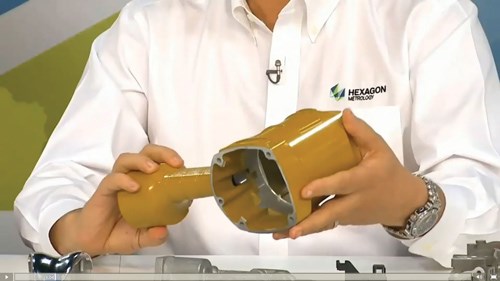
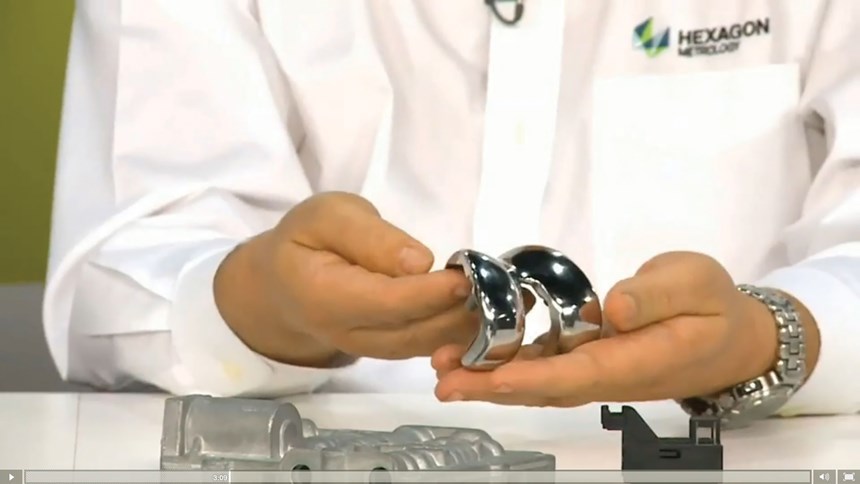
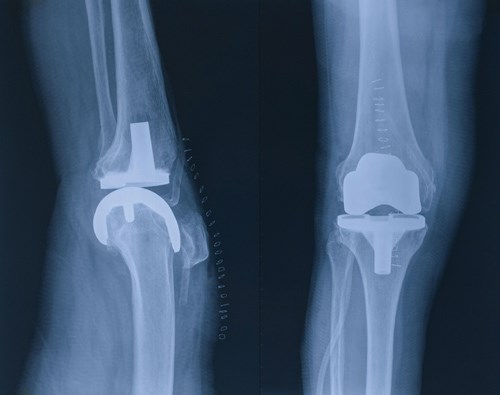
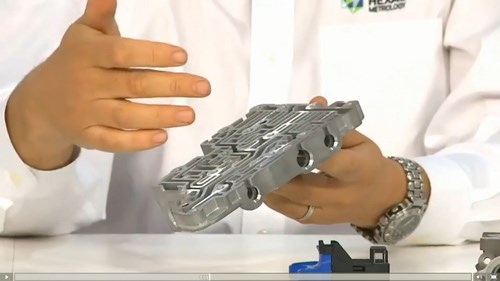










.jpg;maxWidth=300;quality=90)




